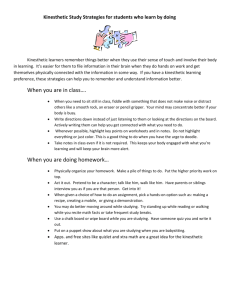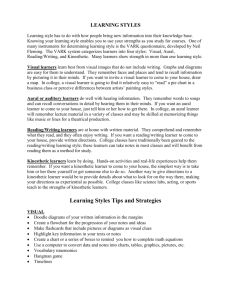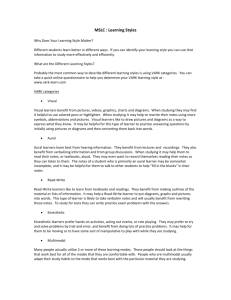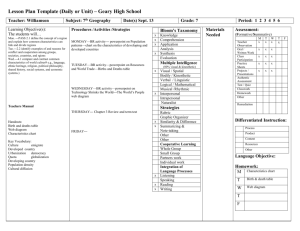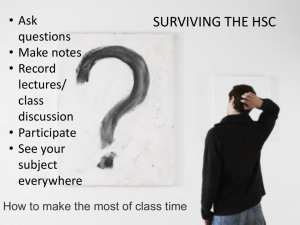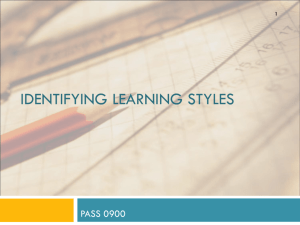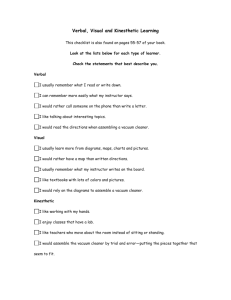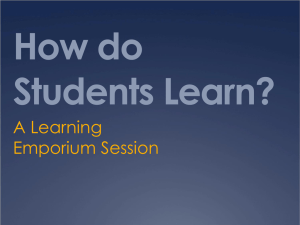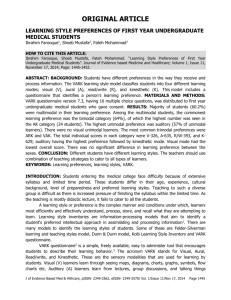Learning Styles Summary
advertisement
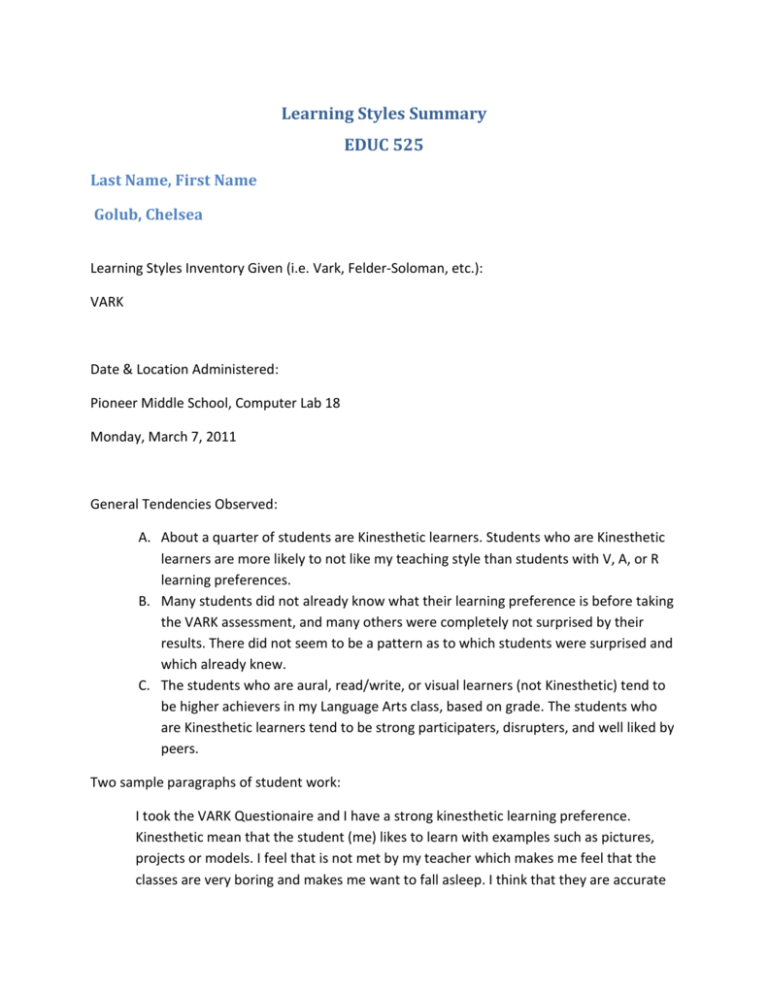
Learning Styles Summary EDUC 525 Last Name, First Name Golub, Chelsea Learning Styles Inventory Given (i.e. Vark, Felder-Soloman, etc.): VARK Date & Location Administered: Pioneer Middle School, Computer Lab 18 Monday, March 7, 2011 General Tendencies Observed: A. About a quarter of students are Kinesthetic learners. Students who are Kinesthetic learners are more likely to not like my teaching style than students with V, A, or R learning preferences. B. Many students did not already know what their learning preference is before taking the VARK assessment, and many others were completely not surprised by their results. There did not seem to be a pattern as to which students were surprised and which already knew. C. The students who are aural, read/write, or visual learners (not Kinesthetic) tend to be higher achievers in my Language Arts class, based on grade. The students who are Kinesthetic learners tend to be strong participaters, disrupters, and well liked by peers. Two sample paragraphs of student work: I took the VARK Questionaire and I have a strong kinesthetic learning preference. Kinesthetic mean that the student (me) likes to learn with examples such as pictures, projects or models. I feel that is not met by my teacher which makes me feel that the classes are very boring and makes me want to fall asleep. I think that they are accurate since the teachers that teach that way are very easy to understand and get a passing grade in. I learned that I am an aural preference learner. I’m not really surprised because that’s also the way I would like to learn. Thankfully Ms. Golub teaches the way I prefer, she includes the class in her lesson and does a lot of talking which helps me absorb everything she says. One thing that does surprise me in my results is that there was a great gap and I knew I was aural but I thought I can learn in other ways and do just as well. I think this is a test teachers should give their students at least once a semester so that they can adapt to the way their students learn the best. I for one am glad that the teachers have a desire to have their students get better grades in their class. How Tendencies Compare to Your Teaching Methods: This VARK questionaire response assignment really opened my eyes. I guess I’m already in a rutt of teaching in a very similar style each day. I use a ton of read/write, visual, and auditory, but practically NO Kinesthetic. I work hard to incorporate Visual, and read/write comes naturally to the lesson plans because it’s mandatory in the state standards and daily curriculum… I don’t even know how to incorporate Kinesthetic into Language Arts. I have been brainstorming, and all I can come up with is: A. Using our bodies to “act out” new vocabulary words B. To practice students’ ability to measure rhyme scheme and beats by creating rhythmic dances to match the poem while reading aloud. C. Students can sit and stand to represent when their “part” of sentences is said? D. Create scenes to act out parts of the books/stories we read Can we discuss ways to incorporate Kinesthetic learning styles into Language Arts classrooms in class on Thursday? I am going to assign a project next week, but is this really Kinesthetic? The assignment is: Students will decide what their personal opinion is of the “percentages of responsibility” that should be attributed to many different people/groups associated with the Holocaust. This is a summative assessment after a long unit on the Holocaust. It’s still a writing prompt, and then there is a visual representation of their opinions in the form of a computerized pie chart showing the percentages they chose up to 100% total. Students’ writing is persuasive in that it indicates why they chose the percentage they chose, i.e. why that person/group is that particular amount responsible for the Holocaust.
